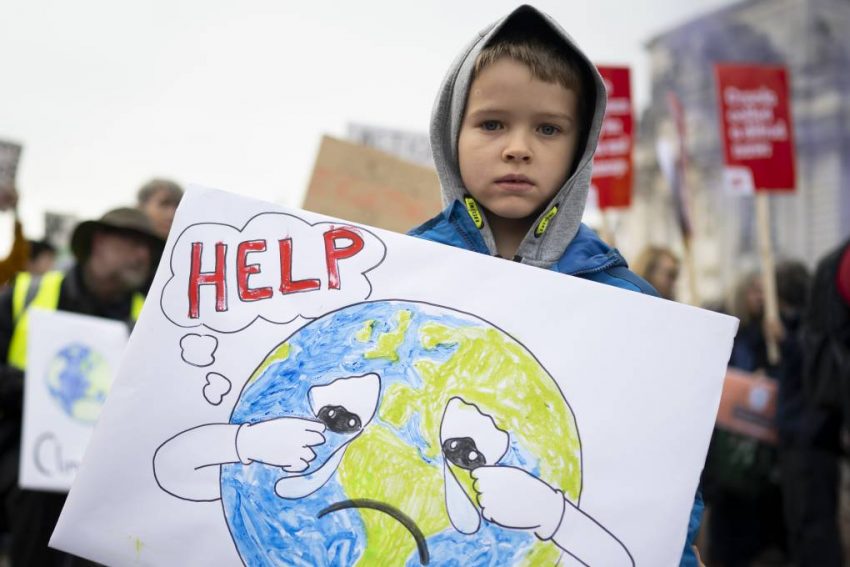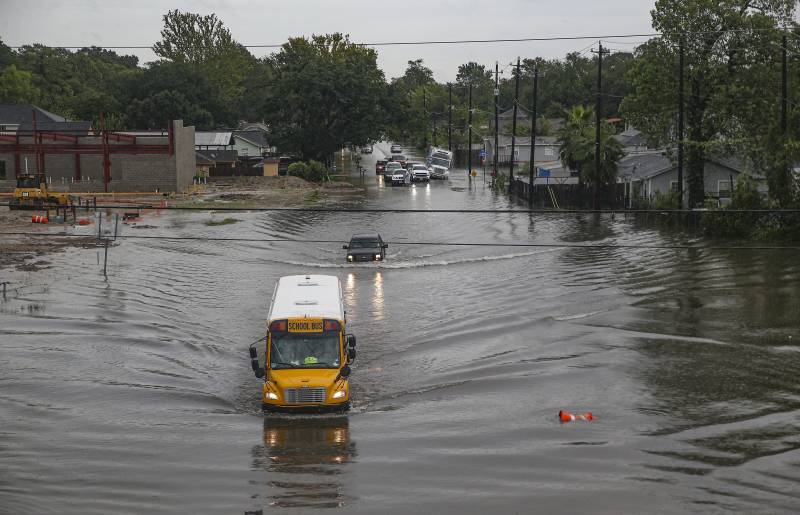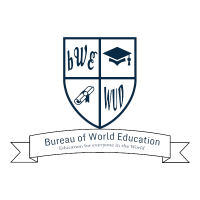
In reality, we will’t obtain the world’s local weather objectives with out schooling, Aruch stated:
“None of those implementations which are being mentioned [at COP] are attainable with out making investments in offering high-quality schooling alternatives for studying all all through the life span.”
Moreover, at COP 27, UNESCO, the U.N.’s academic, scientific and cultural arm, is unveiling one thing known as the Greening Education Partnership. The group is asking nations to set objectives by 2030 and to watch progress in 4 goal areas:
- Making faculties’ bodily infrastructure extra sustainable (Hi there, New Jersey);
- Updating curricula;
- Constructing capability by getting academics and faculty leaders up to the mark;
- Bringing local weather schooling into the group, to make sure that working grownup and lifelong learners additionally get the data they have to be resilient to local weather results and prepared for rising local weather jobs.
(Disclosure: I’m an adviser to This Is Planet Ed, an initiative of the Aspen Institute that promotes an analogous agenda throughout U.S. schooling.)
UNESCO cites some current findings to underscore the urgency of this mission:
- Round half of 100 nations the group reviewed had no point out of local weather change of their nationwide curriculum. (America, in fact, has no nationwide curriculum. Only 20 states have adopted the Next Generation Science Standards, which means protection of local weather in lecture rooms is proscribed and inconsistent.)
- Whereas 95 % of 58,000 major and secondary academics in 2021 felt that instructing local weather change is essential, simply 32 % felt they’ll clarify local weather change of their native context.
- Local weather ignorance is widespread amongst youth. Amongst 17,000 11- to 19-year-olds surveyed globally, 70 % say that they can’t clarify local weather change, can solely clarify its broad rules, or have no idea something about it.
- 75 % of youth in that very same survey say that they’re frightened about their future due to local weather change.
That final level is essential. The truth that we’re having this dialog about local weather schooling within the first place is due to younger individuals, Aruch stated. For the previous few years, world youth activists have heroically pushed local weather onto the worldwide agenda, making it unignorable. However members of Gen Z are additionally affected by extreme eco-anxiety, and so they need to be armed with data that helps them cope and be a part of the answer.

“You see the power that folks in my technology have. It offers a little bit of hope. However that’s provided that they’ve an opportunity to be on the desk,” stated Elizabeth Machache. She is a biodiversity grasp’s pupil in Zimbabwe and is formally representing kids and youth at COP 27. She sees the significance of local weather schooling each on the fundamental degree of survival — instructing native subsistence farmers to undertake drought-resistant crops, for instance — and on the degree of what you may name ethics. “To make good decisions individuals have to be educated and conscious. We’d like people who find themselves conscious of what’s at present occurring, to make the precise choices for future generations.”
Aruch agreed: “College students and educators may have to be geared up with the technical expertise of understanding the local weather science, which is actually essential. However simply as essential are basic social-emotional expertise and consciousness: The assets to interrupt down the way you’re feeling, and feeling like you’ve some company in a problem that may usually be an awesome matter.”
As a living proof, I lately interviewed Danny Cage, a highschool pupil and organizer for the Sunrise Movement in Portland, Oregon. This spring, he and fellow pupil leaders helped get Portland Public Faculties to undertake one of the ambitious climate policies within the nation. It goals for net-zero buildings and electrical buses; it additionally features a highschool elective course in “climate justice,” which mixes local weather science with what you may name “local weather social research” — understanding the disproportionate influence on frontline communities all over the world, usually these which are marginalized by race and/or class. Cage was open with me about his personal struggles with eco-anxiety, and the necessity for faculties to include extra psychological well being assets to assist college students deal with the realities of the world they’ll inherit.
Aruch outlines a broad group of mindsets and competencies that ideally are a part of high-quality local weather schooling: civic and political engagement; social and environmental justice; innovation and entrepreneurship; networks and communication — telling tales and constructing alliances; and methods considering, understanding how all of that is linked.
Integrating all of those components into our lecture rooms might sound like a tall order, particularly when you consider the strains that the pandemic has already placed on college students and academics all over the world. To not point out the pressure of local weather change itself on faculties, as felt from Pakistan to New Jersey.
Then again, the urgency is indeniable. And local weather schooling may also be a power that creates its personal constructive momentum as soon as the ball is rolling. One of many organizations getting the highlight on the COP27 Local weather Training Hub is CAMFED Worldwide. The nonprofit group helps the schooling of women within the African nations of Ghana, Malawi, Tanzania, Zambia and Zimbabwe. It then hires a few of its personal graduates to be local weather educators in their very own communities. Native girls farmers, who often are likely to small plots of land, are coping with inconsistent rainfall and better temperatures; CAMFED “guides” educate strategies for climate-smart agriculture, similar to drip irrigation and intercropping.
Not solely can these girls now develop extra meals for his or her households, they are often empowered, impressed and prepared for the adjustments to return, Esnath Divasoni informed me in an interview. She was educated with the assistance of CAMFED and now works in flip with this system in Zimbabwe. “In communities the place girls are literally educated, they’re at much less danger of being affected by weather-related extremes,” she stated, citing research. “When one is educated, you might be extra in a position to make choices by yourself. You’ve gotten extra essential considering expertise.”
Source link
















